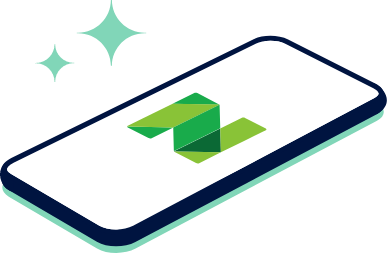How to Report Your Rent to Credit Bureaus: Rent-Reporting Services Guide

Many, or all, of the products featured on this page are from our advertising partners who compensate us when you take certain actions on our website or click to take an action on their website. However, this does not influence our evaluations. Our opinions are our own. Here is a list of our partners and here's how we make money.
How do rent reporting services work?
- A tenant enrolls in a rent reporting service, either by downloading an app or opting in to a service offered by their landlord or property manager. Some services require tenants to link their bank accounts so that rent payments can be tracked and automatically reported. Some services will even go back in time, reporting up to 24 months of previous payments.
- Rental payments are then recorded and reported to one or more of the three major credit bureaus, Equifax, Experian and TransUnion. Some rent-reporting services only report positive, or on-time, payments while others report all payments, which means late payments could harm their credit.
- Tenants can expect to see a rental tradeline, or record of the account, appear on their credit reports roughly 30 days after the first payment is reported. The tradeline should include key details, like when the account was opened and the payment history.
- Once your rent payments are on your credit reports, credit scoring companies, use that data to calculate your credit scores. On-time payments are the biggest factor shaping credit scores, so building a record of on-time rental payment history should help your score.
Stress less. Track more.
See the full picture: savings, debt, investments and more. Smarter money moves start in our app.
Pros and cons of rent reporting services
Pros
Great way to build credit for something you’re already doing — and motivation to keep paying on time.
A possible credit score boost, especially for those with little or no credit history. Better credit could lead to increased access to other financial products.
These services aren’t just for apartment dwellers. Some services allow you to report rent from multifamily homes, condominiums and mobile homes.
Cons
Most rent reporting services charge a fee, and they can add up if you have a tight budget.
Not all services report to all three credit bureaus, limiting the overall impact.
Some services require landlord participation or verification.
How to choose a rent reporting service
Cost and fees
- What would my total costs be for a year of service, including any setup fees or fees for reporting rental history? (Some services can go back as far as 24 months.)
- How can I cancel the service, and is there a fee?
- If I move to a new address, does the service continue to my new address or do I need to re-enroll?
Data privacy
- How do you protect my personal data?
- Is my data shared with third parties beyond the credit bureaus?
Reporting details
- Which of the major credit bureaus do you report to? (All three are ideal.)
- Does the service provide free access to credit scores, and if so, which score(s)?
- How soon should I expect the information to appear on my credit reports?
- What happens if I have a dispute with my landlord or break my lease? In some states, renters have a right to withhold payment if the landlord fails to keep the unit repaired and habitable. Find out whether rent withheld during a dispute is reported as nonpayment or a negative mark.
Specifics about your living situation
- What if I split rental payments with a roommate or family member?
- What if I don’t live in a traditional apartment?
How much do rent-reporting services cost?
- Self: Free for the basic rent-reporting plan, but the premium plan, which reports other utility payments, costs $6.95 per month.
- Boom: Charges $3 per month for ongoing reporting and a one-time $25 payment to include 24-months of past payments from your current residence.
- RentReporters: Get started for a $94.95 sign up fee and then choose either a monthly plan ($10.95/month) or an annual plan ($8.75/month).
Stress less. Track more.
See the full picture: savings, debt, investments and more. Smarter money moves start in our app.
Other ways to build credit
- Become an authorized user on someone else's credit card and benefit from their good credit history.
- Apply for a credit-builder loan at a credit union or community bank. Your loan payments are reported to the bureaus, and you get access to the funds only after you have paid the loan off.
- Have utility payments added to your credit report using a service like eCredable Lift or Experian Boost.








